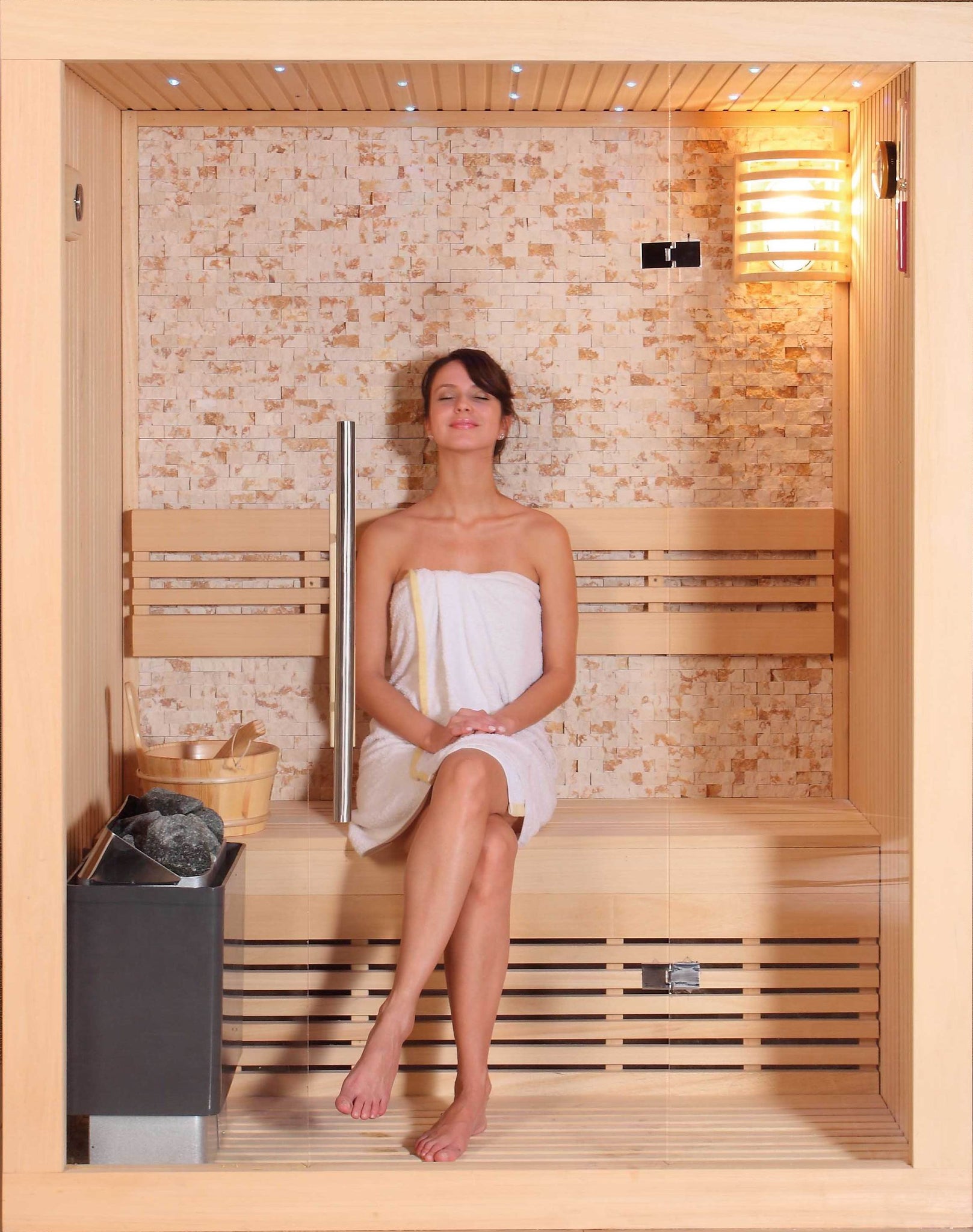Fascination About Traditional Sauna
Fascination About Traditional Sauna
Blog Article
Indicators on Traditional Sauna You Should Know
Table of Contents7 Simple Techniques For Traditional SaunaThe 6-Second Trick For Traditional SaunaThe Ultimate Guide To Traditional SaunaSome Ideas on Traditional Sauna You Should Know
A lot of the weight shed in a sauna is water loss and is re-gained upon rehydrating. Nevertheless, undoubtedly sauna can be a fundamental part of a healthy and balanced weight loss program. To check out the differences in between conventional and IR saunas, I will separate these into proven, theoretical, and made differences.Therefore, the most popular factor in the saunawhich is at the ceiling directly above the sauna heateris generally between 185 and 190 F. Traditional Sauna. Claims that a standard sauna exceeds 200 F is just not true and not relevant for electrical saunas offered in the US. The temperature level for a far-infrared sauna is normally set in between 120 and 140 F; nonetheless, unlike the traditional sauna, the goal in and IR area is not to attain a high temperature level
Due to this, the temperature difference is nearly irrelevant, given that profuse sweating results in both sauna types, but the approach of heating up the body is different. In an IR sauna the bather will really feel warm and will certainly sweat a lot, but at much lower temperature levels. Therefore, if the goal is to spend longer time periods in the sauna, the IR sauna is a great choice.

Not known Facts About Traditional Sauna
When the heat is accomplished, the elements cycle on and off to maintain the heat. A lot of typical sauna individuals delight in pouring water over the rocks to develop steam to increase sauna humidity degrees. The benefits of pouring water over the rocks include: making the area more comfy, moistening the nasal passages, and permitting the use of aromatherapy by mixing important oils with the water.
In a far-infrared sauna, the warm front penetrate the body to successfully heat up the body and increase the body core temperature level. To attain this enhanced temperature level, Far-infrared emitters develop infrared power which is close to the same wavelength as that which the body naturally emitsoften described as the "Essential Range" of 7 to 14 microns), so the energy is well obtained by the body.
When the energy enters the body, it triggers the body temperature level to increase and ultimately leads to perspiration. In an infrared sauna it is necessary for the emitters/heaters to remain on almost frequently. Since there is no mass of rocks to keep warmth, the sauna will cool if the emitters shut down.
As stated over, the sauna bather in an infrared area intends to position himself before running emitters to get optimal gain from the heat. The heating time for both spaces can be extremely different, relying on how the areas are made use of. For a standard sauna, a bather must allow 30-40 mins for the area to attain a desired temperature and to correctly pre-heat the rocks.
A Biased View of Traditional Sauna
A well created sauna will usually accomplish a temperature of 150-160 F in concerning 30-40 mins (Traditional Sauna). For hotter temperatures, the area might require to warm for a longer period. As soon as the area accomplishes established temperature level, the heating unit will cycle on and off, commonly operating about 50% of the moment. The protected wall surfaces and the warmed rocks will maintain the area warm and at stable temperature levels.
To some, 15 mins was "thrown away" while the infrared energy warmed the timber panels as opposed to heating up a body, while others find a pre-heated area to be much more comfy and think a raised beginning temperature level is needed to begin perspiring. The size of suggested use for each area is about the very same (10-15 minutes per session); nevertheless, due to the lower air temperatures and the ability to really feel the effects of infrared heat faster than a typical sauna, it is not unusual for an individual to spend a total amount of 20-30 mins in an infrared sauna.
Typical saunas often tend to be larger (hence make use of even more navigate here power) than infrared saunas, although standard saunas are certainly available in one and two individual sizes. For a two-person typical sauna, 5x6 or 5x7 dimension is most preferred. The top bench can comfortably seat 2 or 3 individuals and is likewise long enough to lie down during the sauna session.


The typical price per kWH of power in the united state is roughly $0.11, so a 4.5 kW heater will cost go to this site about $.50 to run for one hour, if the heater runs continuously for one hour. Generally a sauna heater will certainly run for 75% of the very first hour and 50% of subsequent hours on considering that the aspects cycle once the set temperature level is attained.
Some Known Questions About Traditional Sauna.
A two individual far-infrared room is typically literally smaller sized than a conventional sauna, usually about 4' x 4' or smaller sized. The IR heater is usually 1.5-1.7 kW utilizing a 120 volt 15 amp plug-in service. Because the area can be used quicker than a sauna area, we will certainly assume the room is used for to of an hour including warm up time.
There is a hardly ever reviewed distinction in the social experience between the 2 areas. While our culture has actually shed a few of the social benefit of the standard sauna experience, it can be extremely socially gratifying. From family members time in the sauna, to heart-felt conversations find out here now with loved ones, to sauna partiesthe typical sauna experience can cause intimate socializing.
Most higher end infrared areas consist of colored light treatment, audio systems and full-glass fronts.
Report this page